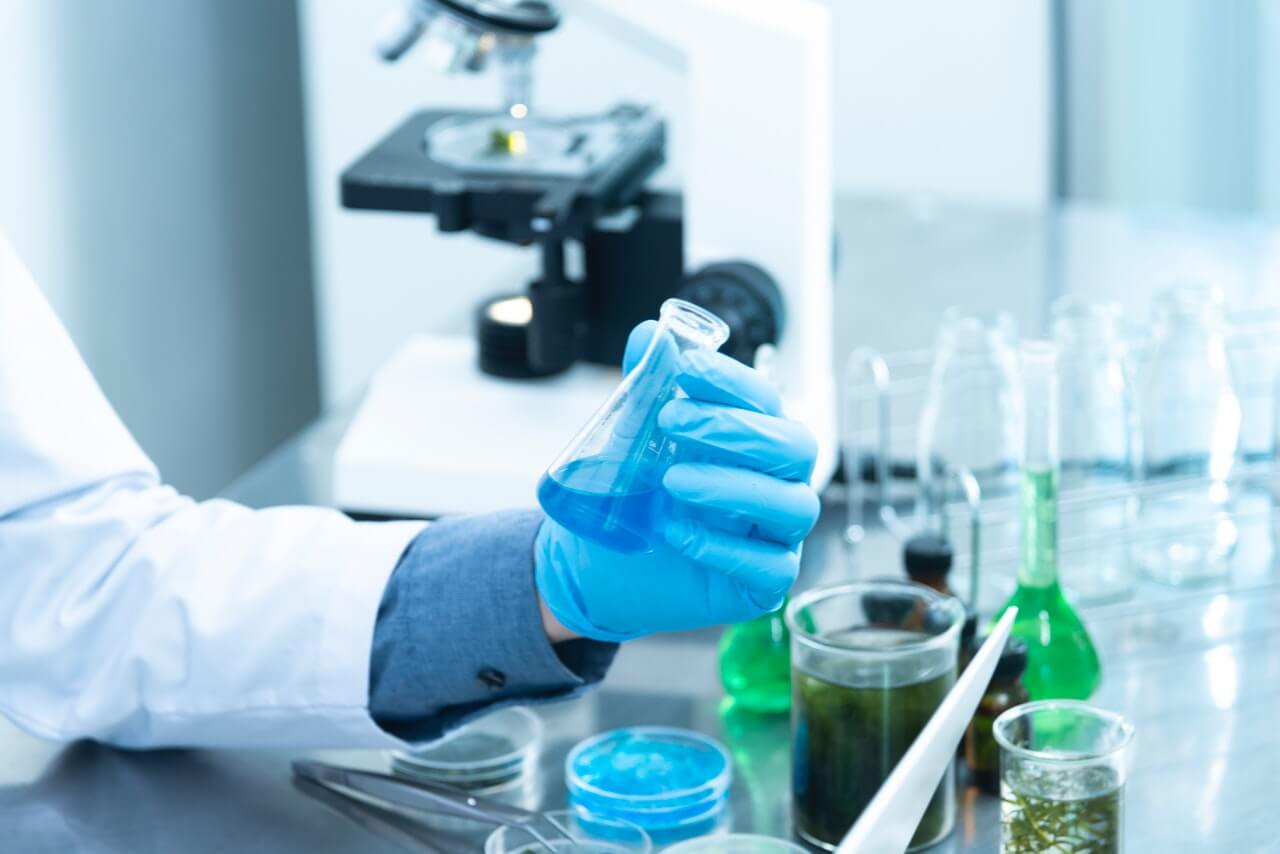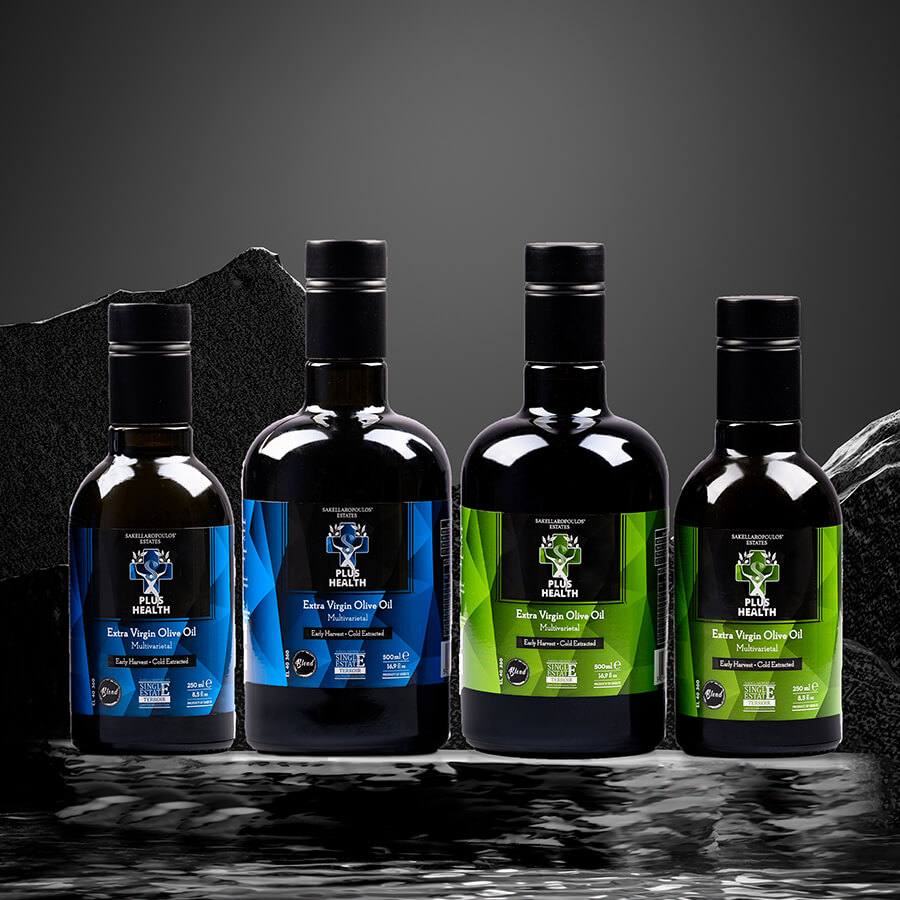
Squalene was discovered in 1906 by Japanese researcher Mitsumaru Tsujimoto, a specialist in Fats and Oils at the Tokyo Industrial Testing Station. He separated the unsaponified fraction of the oil from the shark's liver and discovered the existence of an extremely unsaturated hydrocarbon [1].
The name "squalene" comes from the Latin squalus (= shark), from squalidus (= pale, sick) because it was discovered in the shark's liver [2].
It is very similar in structure to β-carotene, it is an intermediate in the biosynthesis of cholesterol, and it is naturally present in human tissues and especially in the skin, protecting it from photoxidation by sunlight and the retina from oxidative damage [3].
Squalene: Origin and environmental issues

Sharks are known to be a rich source of squalene and more than 40% of shark liver contains squalene [4].
For a long time, shark liver oil was considered the only industrial-grade source for squalene. Even after olive oil became known as the second largest natural source of squalene, shark liver oil remained the most important source for squalene and its hydrogenated derivative, squalane, for the following economic reasons: squalene production from shark liver is less complicated and cheaper than olive oil. In any case, intensive shark fishing has endangered their existence, resulting in many shark species now on the verge of extinction as their breeding cycle is quite large and growth is slow. That is why Europe has recently drastically reduced fishing quotas for these shark species [1].
Unfortunately, about 3 million sharks die each year in order to isolate squalene for use in vaccines, cosmetics and other uses, disrupting the food chain, the environment, ocean life and the natural balance [5].
Squalene and olive oil

In nature, the highest levels of squalene are found in olive oil, shark liver and in smaller quantities in wheat germ and rice bran [6].
Squalene is the main hydrocarbon of virgin olive oil and is an unsaturated terpene compound that covers more than 50% of the unsaponified fraction of olive oil [13, 14].
Olive oil contains up to 300 times more squalene than other vegetable oils and up to 5,000 times more than some plant foods. Also, olive oil, due to the fact that it is not subject to heat or other treatment, contains much higher amounts of squalene than processed seed oils or other oils [7].
Squalene of plant origin is highly valued in the cosmetics and pharmaceutical industries due to some remarkable properties, but also due to the fact that squalene of plant origin is odorless and colorless, without harmful substances to humans, in contrast to squalene extracted from shark liver oil [1].
Properties of squalene and human health

Squalene plays an important role in our health. It contributes to eye health and especially to the sensitive points of the retina and at the same time has an important role in the action of oxygen and oxidative stress, due to the binding of singlet oxygen. [12, 13, 14]
• According to An. Varvoglis, Professor Emeritus of Organic Chemistry, in his book "Chemistry on a Plate": "The fact that sharks do not grow tumors has long puzzled scientists trying to link large amounts of squalene to its unique resistance to a disease where no other animal is immune. Recently it has been advertised that it acts prophylactically and against cancer, without yet clinical documentation". [10]
• It has been reported in the literature that the absence of cancer in sharks is associated with such high levels of squalene [4].
• Squalene, along with phenolic substances and oleic acid, are responsible for the anti-inflammatory properties of olive oil [3].
• At the same time, comparative studies have been conducted on the incidence of certain cancers in Mediterranean countries such as Greece, Spain or Italy where olive oil is a regular part of the daily diet, and both the Nordic countries and the USA. While in the Mediterranean region the daily intake of squalene (from olive oil) can reach 200-400 mg, in the USA the average daily intake of squalene is about 30 mg. The incidence of breast cancer in Greece is 65% lower than in the US. Analyzing statistical health studies from Greece, Spain and Italy compared to the USA, it seems that this protective effect of olive oil could possibly be related to the high concentration of squalene [1].
• Squalene is absorbed by the human body when taken orally in extremely high percentages (60-85%). It enters the body and is converted by the liver very quickly into sterols and acids [8].
• Squalene is a natural antioxidant that lowers cholesterol, has photoprotective, oncoprotective and cardioprotective properties. It is an excellent bioactive substance with a very interesting biological activity [7].
• An increase in HDL cholesterol (good cholesterol) and a decrease in ROS (Reactive Oxygen Species) at a dose of 1000 mg/kg squalene have been observed in mice [8]. ROS are active forms of oxygen (free radicals, ions, etc.) that when increased excessively and an organism can no longer inactivate them, cause a condition called oxidative stress, damaging cells and leading to a variety of diseases and illnesses.
• At the same time, it has been found that vegetables, which naturally contain minimal amounts of squalene, when fried in olive oil are enriched by 2 or 3 times in squalene. Especially in vegetables covered with flour (battered vegetables) squalene has an even greater ability to survive after frying [3].
High levels of squalene in the olive oils by Sakellaropoulos Organic Farms

The values of squalene concentrations in olive oils, according to the literature, are not always at the same levels. This is because there are many factors that affect the final concentration of squalene, most of which have not yet been established.
Despite that, a study by the Laboratory of Analytical Chemistry of the Chemistry department of the NKUA, which took into account 452 samples of virgin and extra virgin olive oils, found that 85% of olive oils had lower concentrations of squalene, while only 15% of olive oils showed high concentrations. Squalene concentrations above 3000 mg/kg in olive oils are considered high [9].
At Sakellaropoulos Organic Farms for a decade now, in addition to the cultivation, the method of processing and packaging of olive oils, we have carried out a variety of analyzes and experiments to find out how the concentration of squalene in our extra virgin olive oils is affected.
The organic olive oils of Sakellaropoulos Organic Farms have shown extremely high squalene values for many years, exceeding the considered high limit of squalene content of 3000 mg/kg in olive oils in general.
More specifically, based on specialized analyzes we have carried out, the values of squalene found in our organic olive oils exceed 10.000 mg/kg, which places them in olive oils that have extremely high concentrations of squalene.
Plus Health – Extra Virgin Olive Oils

After many years of experimentation, research and a variety of tests, we recently released our new line of multi-varietal olive oils (5 olive varieties) under the brand name Plus Health Multivarietal, which is registered as a Trade Mark of Sakellaropoulos Organic Farms and is the culmination of our effort in producing high quality olive oils.
Based on the analyzes we have carried out in collaboration with accredited laboratories, the extra virgin olive oils Plus Health Multivarietal have a multitude of innovative and unique features.
In particular, the extra virgin olive oil Plus Health Multivarietal Blue has, among other things, extremely high concentrations of squalene. To date, the concentration of squalene in Plus Health Multivarietal Blue has reached 10.177 mg/kg and is considered one of the highest values in olive oils in general.
At the same time, in addition to its excellent organoleptic evaluations and chemical analyzes, Plus Health Multivarietal Blue olive oil shows particularly high concentrations of polyphenols. Polyphenols are powerful antioxidants that have been attributed cardioprotective, neuroprotective, anti-inflammatory and antioxidant properties. These concentrations are several times higher than the limits of European Regulation 432/2012 which states that "Olive oil polyphenols help protect blood lipids from oxidative stress." At the same time, it exhibits extremely high levels of two specific polyphenols with health-protective properties, oleocanthal and oleacin (see more here). Oleocanthal and oleacin values are several times higher than the average of the olive oil samples from the international olive oil sampling that participated in a study by the University of California, Davis [11].
Nick Sakellaropoulos
Chemical Engineer M.Sc.
Production Manager
Sakellaropoulos Organic Farms
Sources
• [1] Popa, Ioana & Băbeanu, Narcisa & Niță, S. & Popa, Ovidiu. (2014). Squalene-Natural resources and applications. Farmacia. 62. 840-862.
• [2] Varvoglis An. - Presentation at the 1st Panhellenic Conference on Nomenclature & Terminology of Chemistry, February 22, 2014
• [3] Kalogeropoulos, Nick. (2010). Recovery and Distribution of Macro- and Selected Microconstituents after Pan-frying of Vegetables in Virgin Olive Oil. Olives and Olive Oil in Health and Disease Prevention. 767-776. 10.1016/B978-0-12-374420-3.00080-2.
• [4] Gunes, Fatma. (2013). Medical use of squalene as a natural antioxidant. Journal of Marmara University Institute of Health Sciences. 3. 221-229. 10.5455/musbed.20131213100404.
• [5] Rasha Aridi - 500,000 Sharks Could Be Killed in the Race to Produce a Covid-19 Vaccine - Last access 20/01/2022
• [6] Reddy LH and Couvreur P. Squalene: A natural triterpene for use in disease management and therapy. Advanced Drug Delivery Reviews 2009; 61: 1412-1426.
• [7] Gaforio, J.J.; Sánchez-Quesada, C.; López-Biedma, A.; del Carmen Ramírez-Tortose, M.; Warleta, F. Molecular Aspects of Squalene and Implications for Olive Oil and the Mediterranean Diet. In The Mediterranean Diet; Academic Press: Cambridge, MA, USA, 2015; pp. 281–290.
• [8] Gabás-Rivera C, Barranquero C, Martínez-Beamonte R, Navarro MA, Surra JC. Dietary Squalene Increases High Density Lipoprotein-Cholesterol and Paraoxonase 1 and Decreases Oxidative Stress in Mice. PLOS ONE 9(8): e104224.
• [9] Martakos, I.; Kostakis, M.; Dasenaki, M.; Pentogennis, M.; Thomaidis, N. Simultaneous Determination of Pigments, Tocopherols, and Squalene in Greek Olive Oils: A Study of the Influence of Cultivation and Oil-Production Parameters. Foods 2020, 9, 31.
• [10] Varvoglis Anastasios, CHEMISTRY ON A PLATE, Publisher Katopro, May 2008
• [11] Magiatis, Prokopios & Melliou, Eleni. (2015). Olive oil phenolics and health: Innovation tools. 10.13140/RG.2.1.3897.3601.
• [12] Kiritsakis, A. K. & Markakis, P. (1987) Olive Oil: A Review, Advances in Food Research, 31, 453-482.
• [13] Kiritsakis A. K. (1998) Olive Oil From the Tree to the Table, Second Edition, Food and Nutrition Press Inc, Trumbull Connecticut USA.
• [14] Kiritsakis, A., Keceli, M. T., & Kiritsakis, K. (2020) Olive Oil , In book: Bailey's industrial oil and fat products. Shahidi F., ed., Wiley, Co. doi: 10.1002/047167849X.bio029.pub2.


